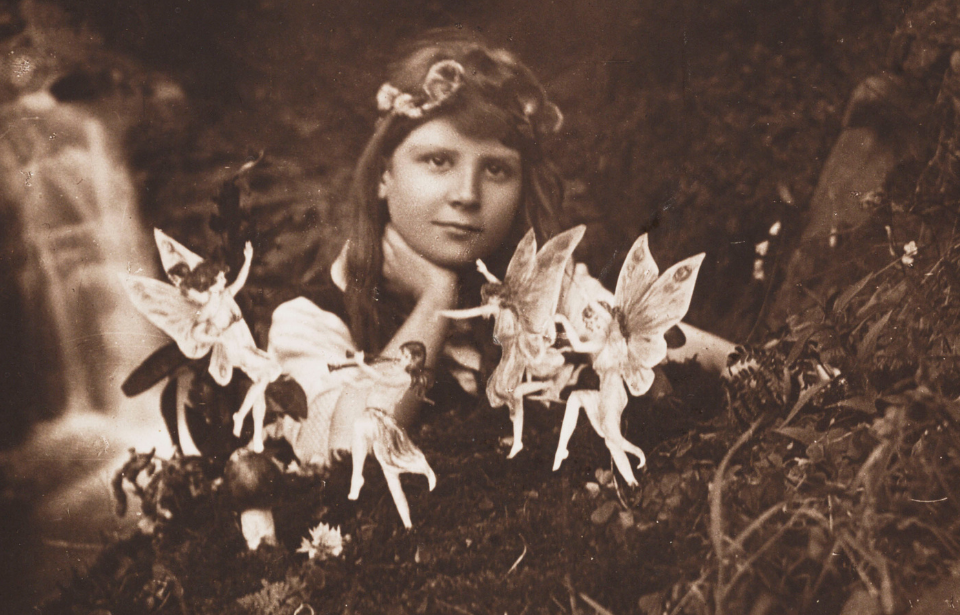How were two teenage girls able to trick the entire world into thinking fairies were real? Easy – they had their “proof” endorsed by Sir Arthur Conan Doyle! If the author of the best crime fiction books in the world believes in fairies, then they must be real, right? In fact, these two girls had much of the world fooled until the 1980s!
‘We only went there to look at the fairies’
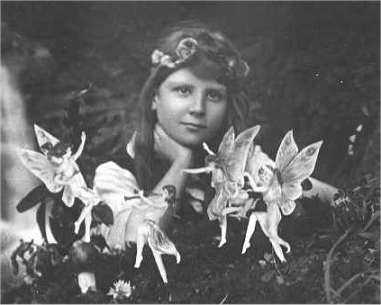
Our story starts in the summer of 1917. In July, a young girl named Frances Griffiths had just arrived in London from South Africa to spend the summer with her aunt and cousin, Elsie Wright. Frances was 10 years old and Elise was 16 years old.
That summer, the pair enjoyed spending their days playing beside a stream at the bottom of a garden behind Elsie’s house. Much to their mothers’ annoyance, the girls often came back into the house wet and muddy. One day when their mothers confronted the girls about their dirty clothes, they said that they only went there to “see the fairies.”
Obviously, this is a rather unbelievable claim, but the girls told their mothers they could prove their fairy friends by taking a photograph of them. Cameras were a rare commodity in 1917, but Elsie’s father, Arthur Wright, was an amateur photographer and agreed to lend his camera to the two girls.
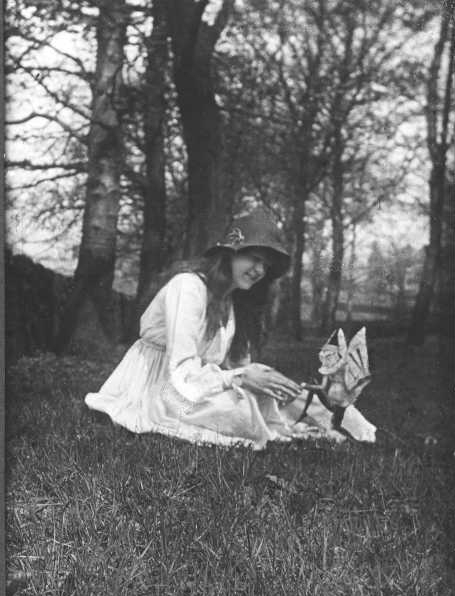
Frances and Elsie quickly returned home with their proof. The picture the girls had taken was entirely convincing. It showed Frances sitting in the garden with a waterfall in the background. Four fairies seemed to be dancing around the girl. Three of them had wings and the fourth was playing a flute-like instrument.
Two months later in September 1917, the girls took another photo with the fairies. This second photo showed Elsie sitting on the lawn reaching her hand out to a fairy, who was stepping daintily onto the hem of Elsie’s skirt.
Elsie’s father didn’t believe these photos to be real, although they had Elsie’s mother, Polly Wright, convinced of their authenticity. She showed the photos to her friends and neighbors, but eventually, interest began to dwindle in the fairy affair as the girls continued to refuse to admit to their prank.
Enter Sir Arthur Conan Doyle
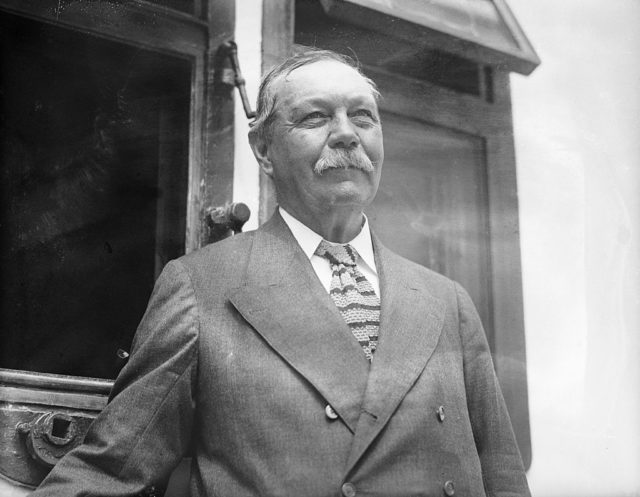
The fairy affair should have ended in 1917. However, in the summer of 1919, two years after the original photos were taken, Elsie’s mother Polly took prints of the photographs to the Theosophical Society in Bradford which was giving a lecture on “Fairy Life.” Polly was interested in the occult, and after the lecture was over, she showed the two fairy pictures to the speaker.
The photographs were then shown at the annual theosophy conference at Harrogate in the fall of 1919, where they caught the attention of the society’s president, Edward Gardner. Gardner then took the photos and gave a series of lectures on them in London in 1920.
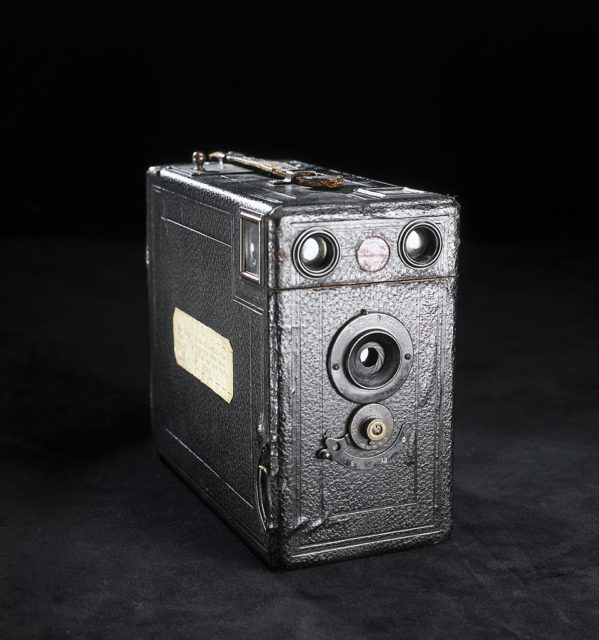
In June 1920, Edward Gardner showed the photos to Sir Arthur Conan Doyle. Conan Doyle is best known for creating Sherlock Holmes, but he was also a convinced spiritualist and completely believed that the dead could communicate with the living. Conan Doyle was in the middle of writing an article on fairies for The Strand Magazine when Gardner showed him Frances and Elsie’s photos.
From Conan Doyle’s point of view, these photographs proved the existence of fairies, which meant that one could photograph the supernatural. After Conan Doyle wrote to both Elsie Wright and her father, he sought expert opinion from the Kodak company. Several Kodak technicians examined the photographs and concluded that the photos showed no sign of being faked, but cautioned that they should not be taken as “conclusive evidence of genuineness.” As such, Kodak refused to give a certificate of authenticity.
A new set of photographs
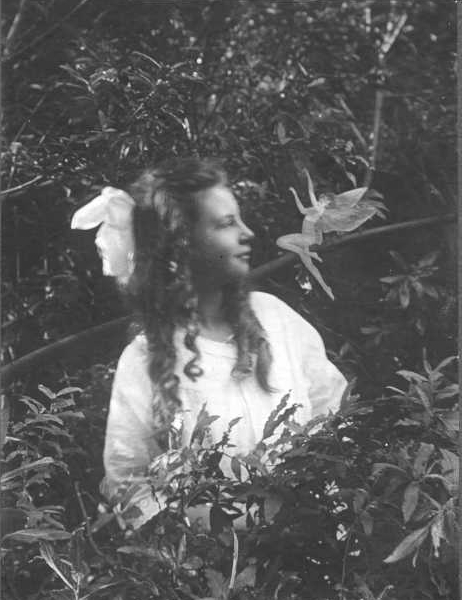
In the summer of 1920, Conan Doyle sent Edward Gardner to Cottingley to interview the Wright family about the fairy photographs. After receiving a report that the family seemed “honest” and “thoroughly respectable,” Conan Doyle decided that he wanted the girls to produce more fairy photos to put the issue of credibility to rest. Gardner was sent back to Cottingley with two Cameo cameras for Elsie and Frances to take new fairy photos with.
Elsie and Frances told Edward Gardner and their parents that the fairies would refuse to be photographed if anyone else were watching. In August 1920, the girls produced three new photos depicting fairies that were then sent to Conan Doyle. In March 1921, nearly four years after the original fairy pictures had been taken, Conan Doyle published these three new photos in a second article in The Strand Magazine.
The story that refused to go away

Edward Gardner made a final visit to Elsie and Frances in 1921. By that time, the girls had grown tired of the fairy business, and eventually the public’s interest in the Cottingley Fairies dwindled.
In 1966, Elsie, Frances, and the Cottingley Fairies were back in the news when Peter Chambers of the Daily Express tracked Elsie down to update the story. Elsie told Chambers that the fairies “might have been figments of my imagination.” However, it remained unclear whether Elsie was admitting to faking the photographs or if she believed she somehow had been able to photograph her thoughts.

Five years later, in 1971, Elsie appeared on the BBC1 television program Nationwide, but stuck to her story, saying “I’ve told you that they’re photographs of figments of our imagination, and that’s what I’m sticking to.” Again, in 1976, both Elsie and Frances were interviewed and questioned about their photographs. Although both women agreed when the interviewer told them that “a rational person doesn’t see fairies,” neither of them admitted to fabricating the photographs.
It wasn’t until the 1980s that the cousins finally admitted that the photographs were a hoax. However, both women maintained until their deaths that they really had seen fairies in their garden during their youth. In fact, Frances always insisted that the fifth and final photo of just the fairies in the grass was genuine.
How did the girls do it?

As it turns out, it was not that difficult to fake these fairy photographs. It is easy to forget that these photos were taken in 1917. The world was in the middle of the First World War, and perhaps needed something light to believe in among all the death and distraction. Similarly, photography was in its infancy, and there was no such thing as Photoshop, so to many people, these images probably did seem extremely realistic.

The girls used photos from a very popular children’s book, Princess Mary’s Gift Book, for inspiration for their fairies. Elsie had copied these pictures onto cardboard and drew wings on them, then cut them out with a very sharp pair of scissors. After they cut the figures out, the girls secured the images to a bank of earth with hatpins. After they were done taking the photos they disposed of their props in the garden and went back inside to develop the photos they had taken.
More from us: Fooled You: 7 Of History’s Greatest Hoaxes
The girls were probably hesitant to admit to what they had done, especially because they had tricked Sir Arthur Conan Doyle. If nothing else, both Elsie and Frances were extremely crafty girls who were able to wow the world with their pictures of fairies.
